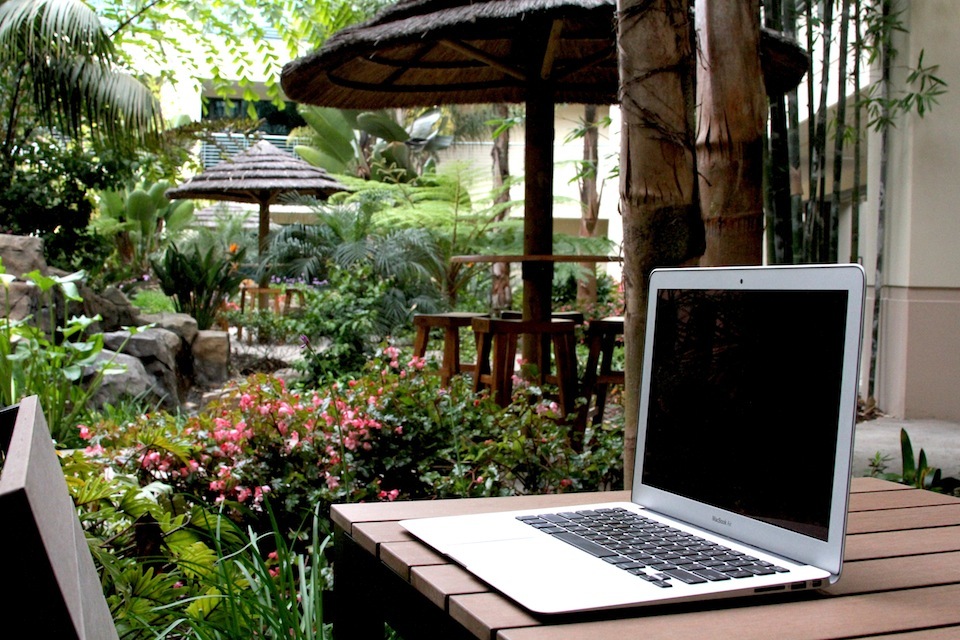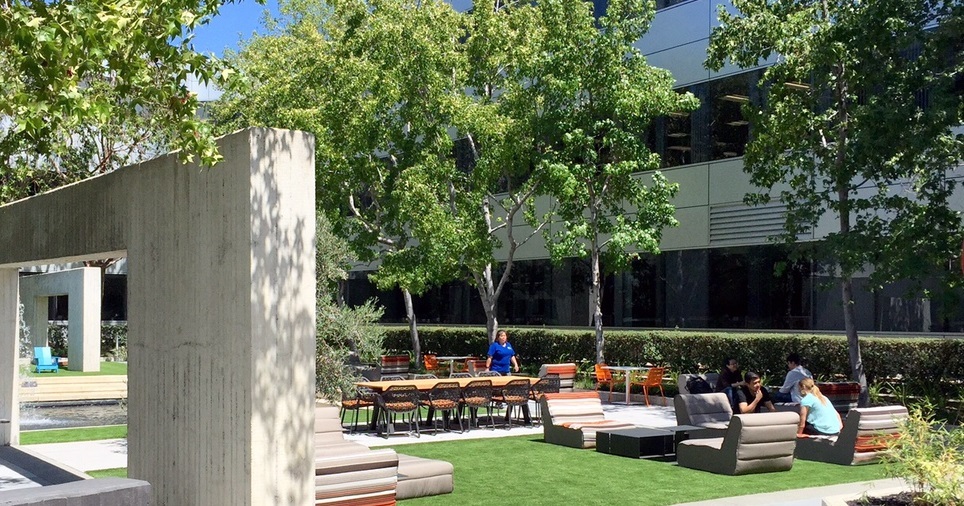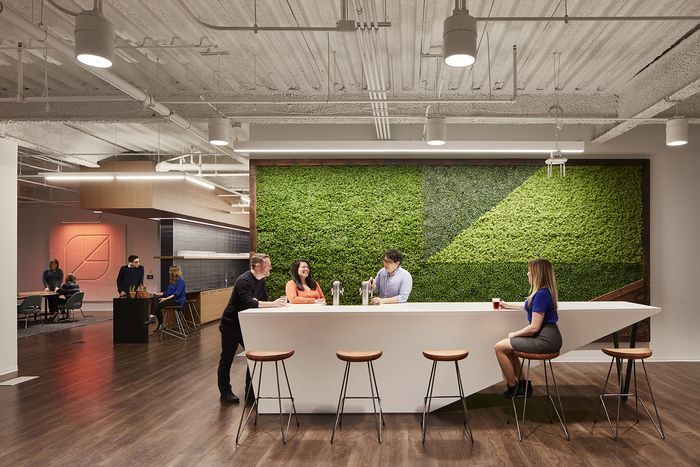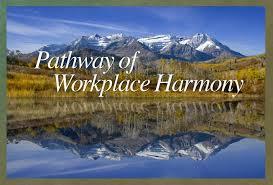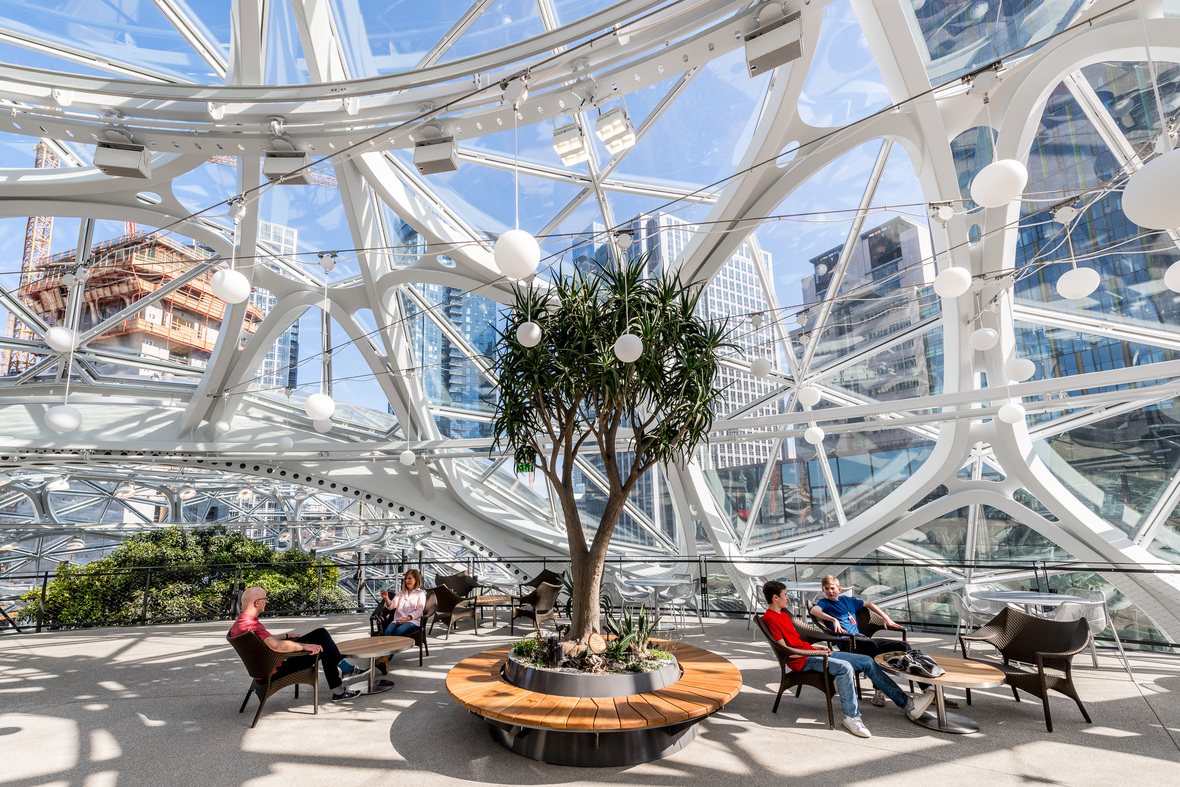
Outdoor green spaces can play an important role in occupant health. Research has shown that contact with nature can reduce overall stress. As the boundaries between work and the rest of life have blurred, it’s become a matter of both employees’ satisfaction and public health to offer outdoor spaces that support wellness. Typical urban cores, which are often large blocks of office buildings, don’t offer this—getting to access to nature may require traveling a substantial distance to the nearest park. Research indicates that the proximity and features of outdoor spaces may have a greater impact on people’s activity levels than the size of the space. So, if the goal is to help people get more exercise throughout the day, it’s better to have multiple smaller spaces with a variety of features than one big one.
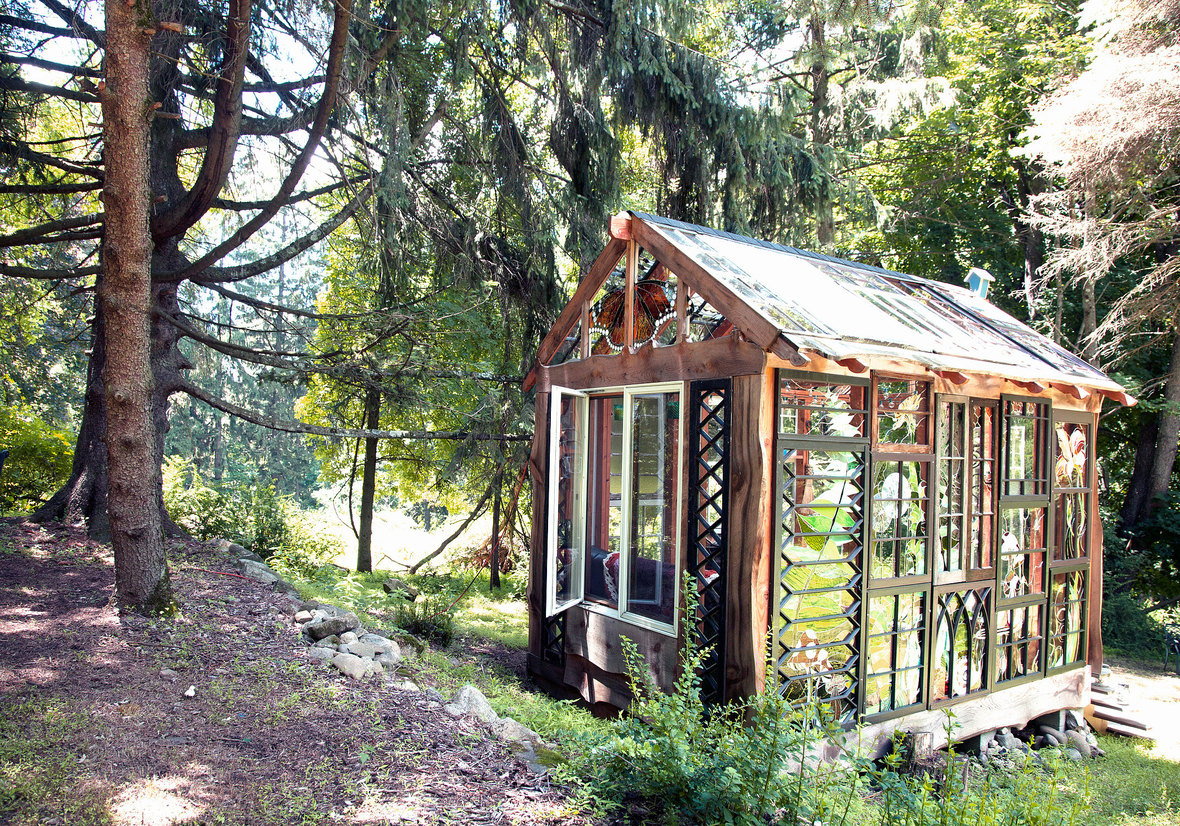
The increased mobility offered by remote and distributed work also means that there are growing numbers of people who can live anywhere they want. If they want to be surrounded by pastoral beauty, they can move to the actual countryside. This applies to entire companies as well; attracting talent and accessing resources no longer requires many businesses to be located in a central business district.
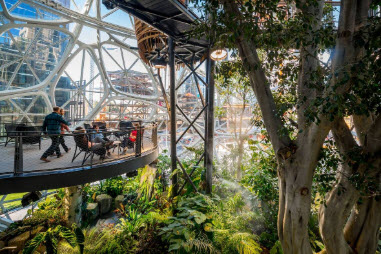
The recent Living Future Unconference promotes the view that designers of buildings and spaces should not simply try to minimize harm; they should aim to actually make positive contributions to both the environment and human health. Luckily, there are ways for designers to give people access to the outdoors throughout their day. For example, an urban rooftop used to be a liability; now it is an asset waiting to be developed into a viewing deck or lounge. Additionally, adopting a more mobile work style, like Activity-Based Working, can encourage people to take full advantage of the outdoor spaces that already exist.
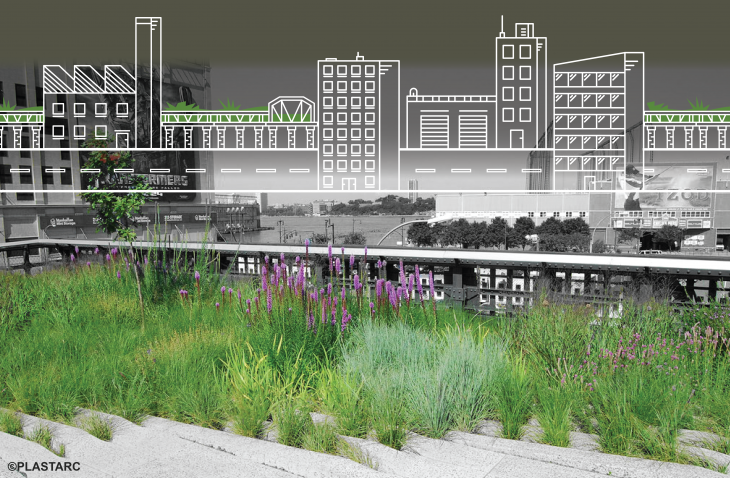
Kind regards,
Edit Bosshart Inspired Business Interiors Inc.
Edit Bosshart Inspired Business Interiors Inc.

